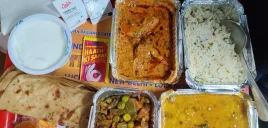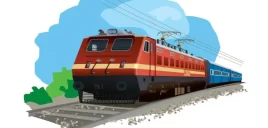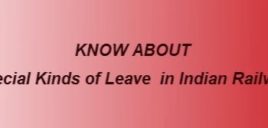Principally two types of welding are used for rails. One is Flash Butt Welding, and the other is Alumino-Thermic Welding, also known as Thermit(e) welding. A third kind of welding, known as Gas Pressure welding, is used much less often, and a fourth kind, Metal Arc Welding, is very rarely used.
In Flash Butt Welding, a strong electric current is passed through the metal body of the rail in the vicinity of the spot which is to be welded, and the resistance of the rail to the current results in localized heating which melts the metal. No additional material is added, and the parent metal of the rails itself forms the material of the weld. About 25mm to 35mm of the rail length is consumed in the melting process. Flash butt welding is done in mostly automated way using a machine that clamps and firmly holds together the two ends of the rails to be welded. When the two end surfaces are close together and the electricity turned on, the current arcs over or ‘flashes’ at the junction between the rail ends. The rail ends are moved back and forth to keep the flashing going and generate enough heat to melt the metal at the ends. The flashing cycles are adjusted so that the current flows without creating a short-circuit situation nor leaving it at an open circuit for too long. Typically, the weld current reaches 30,000 to 80,000 amps at about 400V to 500V. The machine then forces the ends of the rails together with high pressure after the metal at the ends has melted, to consolidate the joint as it cools and solidifies. Pressures range from 5kg/mm2 for 72UTS rails to 6kg/mm2 for 90UTS rails and 7kg/mm2 for 110UTS rails. When the weld has set, an operation of stripping is carried out to remove excess metal that has solidified around the joint. Then the rail is cooled and straightened out. As with all welds, the joint has to be ground smooth so the weld surface is flush with the parent rail surfaces. Variations in the techniques include methods for initial burn-off and preheating, flashing cycle variations, methods of cooling, etc.
In Thermit Welding or Alumino-Thermic Welding, the two ends of the rails are not brought into contact; instead, the gap between them is filled with molten material created by the exothermic reaction of aluminium and iron oxids. More details on thermit welding can be found here. Thermit welding is a manual process requiring considerable skill on the part of the welders. Traditionally, IR used conventional thermit welding, but in recent years has switched almost completely to the Quick Thermit Welding process, also known as the ‘short pre-heat’ or ‘SKV’ process. This saves time in the welding process but puts a higher premium on the welders’ skills.
Flash butt welding is generally considered to be superior to thermit welding because it is essentially a forging process and the material of the weld is chemically identical to the parent body of the rails, which means its strength and other characteristics are almost identical to those of the body of the rails. Flash butt welding also typically results in fewer defects such as contaminant particles, porosity, etc., at the weld. Thermit welding also requires a higher quality of rails as a precondition — rails that are corroded, twisted or warped, hogged or battered, or excessively worn cannot be welded by the thermit process as faults can propagate into the weld material and cause weld fractures.
Other Methods. Gas Pressure Welding a solid phase welding technique. Oxy-acetyline flames are used to heat the ends of the rails to be welded to 1200°-1300°C, and they are then placed in contact with one another at high pressures, leading to the formation of a solid bond. ER has one gas pressure welding machine from Japan that has been in use since 1966. Konkan Railway also imported Chinese and Japanese gas pressure welding machines during the construction of the Konkan railway line. Other than these, gas pressure welding is not used by IR. Metal Arc Welding is extremely rare.
Source – IFRCA.org
This entry was posted in 2 Railway Employee, STUDY NEW, Railway Employee











